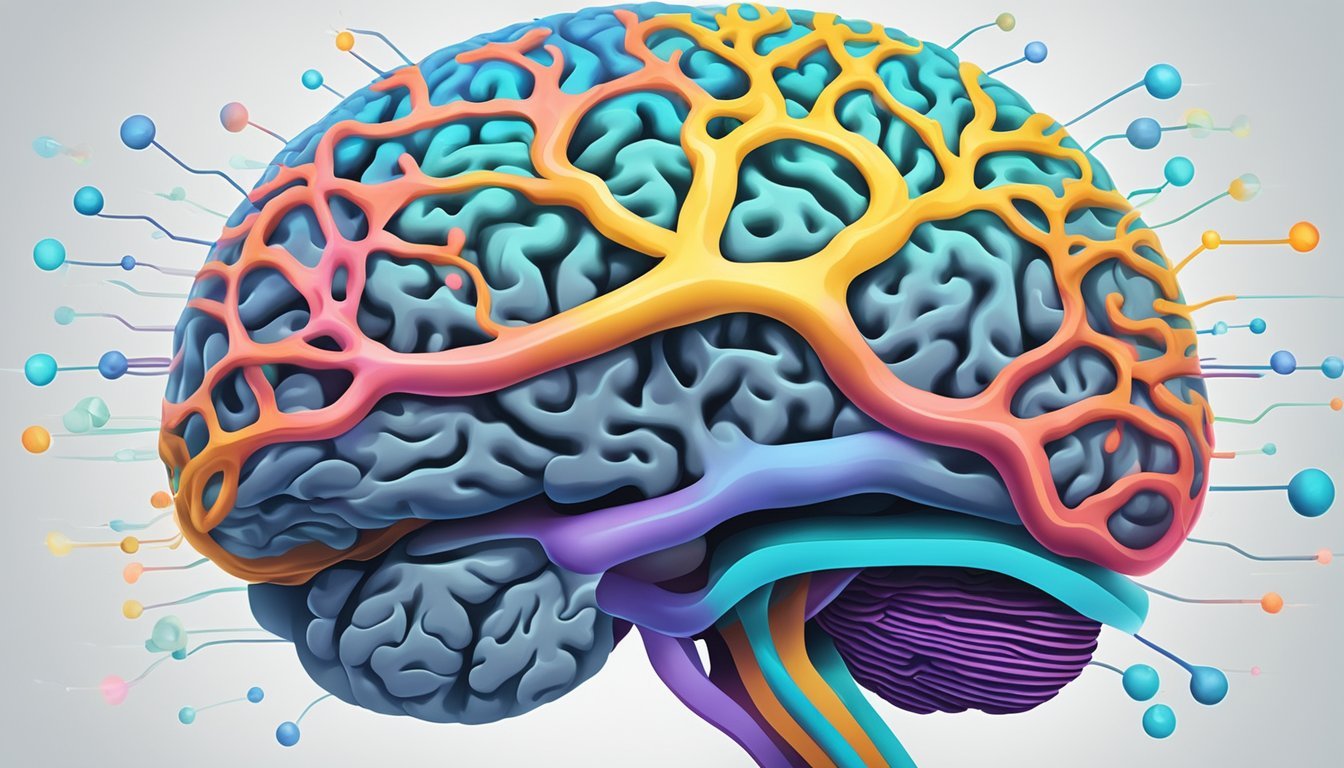Exploring MARCoNS Testing
Essential Insights for Carnivore Health
Carnivores exploring a meat-heavy diet might encounter references to MARCoNS (Multiple Antibiotic Resistant Coagulase Negative Staphylococci), especially within the context of chronic inflammatory response syndrome (CIRS). Understanding MARCoNS testing can be crucial for those seeking to optimize their health, particularly if they are experiencing symptoms often linked to biotoxin illnesses. MARCoNS is a type of staph infection resistant to common antibiotics, often found in the nasal cavities of those with CIRS.
Testing for MARCoNS is essential for those on a carnivorous diet who suspect they might have this infection. Symptoms can mimic other chronic health conditions such as fibromyalgia and autoimmune disorders, making accurate diagnosis and treatment critical. Without proper identification and management, individuals may continue to suffer unnecessarily, despite dietary changes.
For carnivores, maintaining a diet rich in meat does not inherently protect against MARCoNS, but understanding the connection between diet, health, and potential infections can lead to better health outcomes. Integrating MARCoNS testing into your health regimen provides a clear path to address any underlying issues that could compromise your well-being.
Understanding Marcons
MARCoNS, or Multiple Antibiotic Resistant Coagulase Negative Staphylococci, is a type of bacteria associated with various chronic illnesses. Its impact is particularly significant in conditions like Chronic Inflammatory Response Syndrome (CIRS) and biotoxin illness, especially in those exposed to mold.
Defining Multiple Antibiotic Resistant Coagulase Negative Staphylococci
MARCoNS refers to a specific strain of staph bacteria. Unlike typical staph bacteria, which can be treated with antibiotics, MARCoNS are resistant to multiple antibiotics. These antibiotic-resistant staph bacteria reside deep in the nasal passages, particularly affecting individuals with low MSH (Melanocyte-Stimulating Hormone) levels. This makes them a persistent problem and more challenging to eradicate.
Marcons Role in Chronic Illnesses
MARCoNS creates intricately structured biofilms within the nasal passages. These biofilms can continue to trigger inflammatory responses long after initial exposure. In people with CIRS and other chronic inflammatory diseases, the body's immune system struggles to combat these biofilms. This ongoing inflammation can lead to a range of persistent symptoms, including fatigue, cognitive difficulties, and respiratory issues. The resistant nature of MARCoNS exacerbates these conditions, making typical treatments less effective.
Connection Between Marcons and Mold Exposure
Exposure to mold and other biotoxins can predispose individuals to developing MARCoNS infections. Mold exposure is known to suppress the immune system, reducing levels of protective MSH. This suppression allows MARCoNS to thrive, as the weakened immune system cannot efficiently combat the bacteria. Consequently, mold-infested environments become a significant risk factor for those susceptible to CIRS and associated chronic illnesses. Addressing MARCoNS infections often involves treating both the bacterial component and mitigating mold exposure.
Symptoms and Diagnosis
MARCoNS testing provides crucial insights for carnivores experiencing a range of health issues. By understanding symptoms and appropriate diagnostic measures, one can take proactive steps toward better health.
Recognizing MARCoNS Symptoms
MARCoNS, a type of antibiotic-resistant staphylococcus, can lead to various symptoms. Individuals might experience chronic fatigue, sinus congestion, and persistent infections.
Chronic pain and mood swings are also common. Inflammation markers in the blood could indicate MARCoNS involvement. While some might remain asymptomatic, these signs suggest it’s prudent to undergo testing if persistent issues arise.
Laboratory Testing for MARCoNS
Diagnosis often begins with a nasal swab to detect MARCoNS presence. This bacterium colonizes nasal passages and dental cavitations.
Tests might measure levels of ADH, Osmolality, and MMP-9. Normal ranges for these markers provide a reference to identify abnormalities. For example, ADH levels within 1-13.3 pg/ml and Osmolality at 280-300 mosmol may suggest a standard reading. Deviations from these ranges can affirm suspicions of MARCoNS.
Genetic Testing and Susceptibility
Genetic testing can uncover susceptibility to MARCoNS. Individuals with low MSH (melanocyte-stimulating hormone) may exhibit specific genomic profiles.
These profiles can differ significantly in comparison to those not affected by MARCoNS. Genetic predisposition could influence how one responds to the bacterium.
Such insights emphasize the importance of personalized treatment plans tailored to genetic risk factors along with laboratory results.
Testing for MARCoNS
MARCoNS, or Multiple Antibiotic Resistant Coagulase Negative Staphylococcus, can be a hidden culprit in individuals, often affecting those with Chronic Inflammatory Response Syndrome (CIRS). This section explores the critical aspects of MARCoNS testing, including nasal swab techniques, antibiotic resistance identification, and biofilm implications.
Nasal Swab and Culture Techniques
A primary method for detecting MARCoNS is through nasal swab and culture testing. This involves collecting a sample from deep within the nasal passages. Standard swabs may not be sufficient; a deep swab is necessary to ensure accurate results.
These swabs are often cultured for an extended period, typically longer than standard swabs, to allow the slow-growing bacteria to be detected. Accurate and thorough swabbing is crucial for identifying this antibiotic-resistant bacterium, making diagnostic accuracy highly dependent on technique.
Identifying Antibiotic Resistance
One of the most important aspects of MARCoNS testing is identifying antibiotic resistance. MARCoNS are resistant to multiple antibiotics, which can complicate treatment options. Testing helps to determine the specific resistance profile of the bacteria, guiding effective treatment strategies.
Laboratories culture the nasal swabs to see which antibiotics the MARCoNS strains resist. Antibiotic resistance is identified through susceptibility testing, revealing which drugs are ineffective against these bacteria. This step is crucial for clinicians to plan targeted therapies.
Understanding Biofilms in Diagnosis
Biofilms play a significant role in MARCoNS infections. These structures protect bacteria from both the immune system and antibiotics, making infections difficult to eradicate. Biofilms consist of a matrix of polysaccharides, proteins, and DNA, providing a shield against external threats.
During testing, it's essential to recognize the presence of biofilms. They often require specialized treatment approaches that target these protective layers, beyond standard antibiotic therapy. Understanding biofilms helps in diagnosing the complexity and persistence of MARCoNS in the nasal passages, particularly in chronic conditions such as CIRS.
Treatment Strategies
Effective management of MARCoNS, a common nasal staph infection among chronic inflammatory response syndrome (CIRS) patients, often requires a multi-faceted approach. Treatment may involve a combination of antibiotic therapies, alternative treatments, and specific protocols like the Shoemaker Protocol.
Antibiotic Therapies
Prescribing antibiotics is a common strategy to treat MARCoNS. Antibiotics targeting multiple antibiotic-resistant coagulase-negative staph infections are crucial, given the resilient nature of these bacteria. Nasal sprays containing a mix of colloidal silver and EDTA are often recommended. These compounds help to break down biofilms that MARCoNS create, making the bacteria more vulnerable to treatment.
In addition to silver and EDTA, Mupirocin is another antibiotic frequently used. The treatment duration generally lasts around 30 days and is sometimes extended if the infection persists. It's important to follow up with laboratory tests to ensure the bacterial load has been effectively reduced.
Beyond Antibiotics: Alternative Approaches
Alternative treatments can complement antibiotic therapies in managing MARCoNS. Xylitol nasal sprays have shown effectiveness in disrupting biofilms, similar to EDTA sprays. Argentyn 23, a form of colloidal silver, can also be beneficial due to its antimicrobial properties.
Addressing the patient's immune response is another critical component. Strengthening the immune system through dietary adjustments, supplementation, and lifestyle changes enhances the body's ability to fight off infections. Detoxification protocols, such as using binders to remove mycotoxins, can support overall treatment efficacy, especially in patients with CIRS.
The Shoemaker Protocol
The Shoemaker Protocol is a structured treatment plan designed explicitly for CIRS patients dealing with MARCoNS. This protocol begins with a comprehensive diagnostic phase to identify biotoxins and other contributing factors. Should MARCoNS be detected, the initial step involves using a BEG spray, which combines Bactroban (Mupirocin), EDTA, and Gentamicin.
Following the nasal treatment, the protocol emphasizes correcting hormonal imbalances, addressing systemic inflammation, and detoxifying the body. These steps involve various binders, such as cholestyramine, to remove biotoxins, and medications to regulate immune responses. Regular monitoring and adjustments are essential to the protocol's success, ensuring that each patient's treatment plan is tailored to their specific needs.
Lifestyle and Management
Understanding how to manage MARCoNS involves addressing several key lifestyle factors: diet and nutrition, environmental control, and managing associated conditions. Each area requires specific strategies to help mitigate symptoms and support overall health.
Diet and Nutrition for MARCoNS Patients
Diet is critical for MARCoNS patients. A balanced diet helps strengthen the immune system and reduce inflammation. Focus on anti-inflammatory foods such as fatty fish, leafy greens, nuts, and seeds.
Avoid:
Refined sugars
Processed foods
Alcohol
Include:
High-quality proteins (lean meats, eggs)
Fermented foods (kefir, yogurt)
Natural antifungals (garlic, coconut oil)
For patients with conditions like chronic Lyme or yeast infections, the reduction of sugar and refined carbs is crucial to prevent feeding harmful bacteria and fungus.
Environmental Control and Clean Living
A clean environment is essential for reducing MARCoNS exposure. Patients should regularly clean living spaces to eliminate mold and biotoxins. Use HEPA air filters and dehumidifiers to control air quality and humidity levels.
Cleaning Tips:
Use mold-resistant materials.
Regularly wash bedding and curtains.
Employ natural cleaning agents to avoid chemical sensitivities.
Also, removing potential allergens, such as dust, pet dander, and chemical pollutants, can significantly reduce inflammation and allergic reactions.
Managing Associated Conditions
Those with MARCoNS often struggle with various associated conditions, including chronic inflammatory illnesses and fungal infections. Regular medical checkups to monitor and manage conditions like chronic Lyme, candida, and allergies are crucial.
Chronic Lyme: Requires ongoing antibiotics and immune support.
Candida: Managed through dietary changes and antifungal medications.
Molds and Mycotoxins: Regular inspections and mold remediation can prevent exposure.
Patients should work closely with healthcare providers to tailor treatment plans that address both MARCoNS and any concurrent health issues.
Hormonal and Neurological Effects
MARCoNS (multiple antibiotic-resistant coagulase-negative staph) can significantly impact hormone levels and neurological functions. These effects are especially prevalent among those with Chronic Inflammatory Response Syndrome (CIRS).
Impact of MARCoNS on Hormone Levels
MARCoNS infection can disrupt several hormone functions, creating imbalances that affect various physiological processes. Elevated cortisol and reduced levels of melanocyte-stimulating hormone (MSH) are common. High cortisol levels can lead to adrenal fatigue, increasing stress and reducing energy levels.
Melatonin and anti-diuretic hormone (ADH) may also be affected. Disruptions in melatonin impact sleep quality, while imbalances in ADH alter kidney function, affecting water retention and overall hydration.
As a result, patients may not sleep well and experience increased dehydration. ACTH levels, controlling cortisol production, can be irregular, further complicating hormonal stability.
Neurological and Cognitive Symptoms
Hormonal irregularities caused by MARCoNS can lead to various neurological symptoms. Patients often report cognitive issues like brain fog, memory loss, and concentration difficulties.
When cortisol levels are high, it may exacerbate stress responses, leading to anxiety and mood swings. Hormone imbalances can also affect neurotransmitter functions, which may contribute to chronic fatigue symptoms.
Low melatonin can disturb sleep patterns, impairing the body's ability to recover and function optimally. Additionally, reduced MSH can aggravate inflammation, impacting neurological health. These combined factors create a syndrome where physical and cognitive functions are severely compromised.






